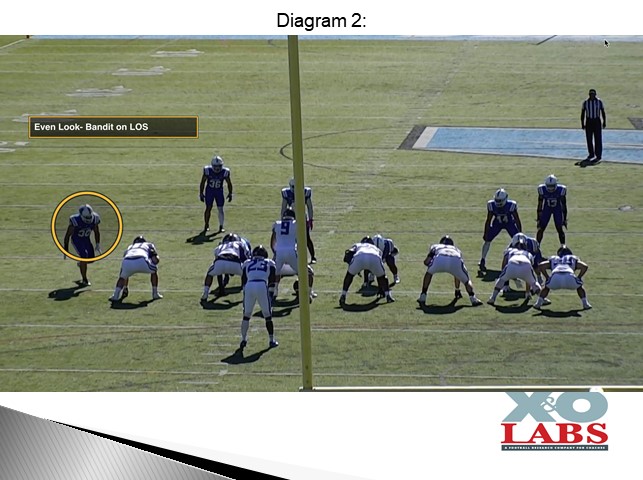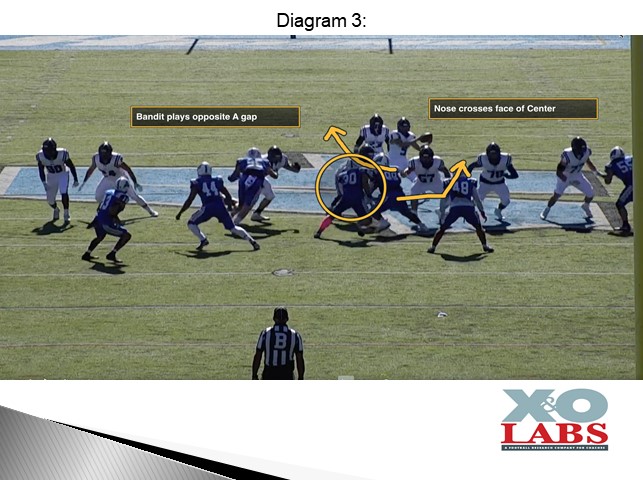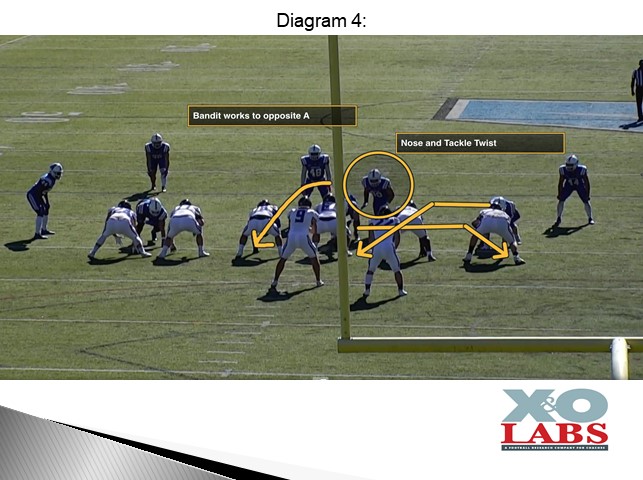By Mike Kuchar with Woody Blevins
Defensive Coordinator
Assumption University (MA)
Twitter: @CoachWoody2
When you utilize Tampa coverage on over 35 percent of downs, you better find a way to present the offense with different looks. In most Tampa structures, the Mike linebacker is the middle run through defender. And while that defender’s responsibility rarely changes in Assumption’s system, the coverage defenders around him most certainly will. It’s all predicated on a call system that defensive coordinator Woody Blevins installs, yet gives ownership to his players in making the adjustments based on offensive formation. “It’s crazy how simple it is,” he quips.
While the Mike linebacker is routinely the middle run through defender, he’ll continually change the hook, flat and half defender on each side of him. That’s what makes it not so confusing not just to the quarterback as far as coverage, but also nearly impossible to identify where the extra fitter is coming from in the run game. “We fit Tampa and Cover three (the Greyhounds other primary coverage) the same way,” he said. “It’s just based on what job these underneath defenders are doing, whether they are the hook, flat, half, middle run through defender. They don’t learn a new fit by coverage. It’s by the job.”
Assumption Defensive Personnel:
- Rush End- Field End
- Tackle
- Nose-
- Bandit- Boundary End or flex linebacker
- Mike- Strong inside backer
- Will- Weak inside backer
- Nickel Sam- Field Overhang
- Strong Safety
- Free Safety
- Field Corner
- King- Boundary Corner
Assumption Front Structure:
How Coach Blevins teaches Tampa is unique in itself, but how he designs his front structure may be just as exclusive. The Greyhounds are multiple, operating out of three distinct fronts- an Even look, Odd look and a Single flex spacing. The single flex structure puts the Bandit (or boundary defensive end) up on the line of scrimmage. He has the ability to cancel any gap he chooses based on the call. This allows the fits on the backend to never change, regardless of the front.
The versatility of this defender allows him to be flexed on either side of the formation, to the back, away from the back, to the field or to the boundary. “He has a rule based on call,” said Coach Blevins. “If he doesn’t have a rule it’s wherever he wants.”

When Coach Blevins wants to transition into four-down spacing, the Bandit walks up on the line of scrimmage to the boundary.

While the pre-snap picture presents one thing, the post-snap look will be completely different. Assumption moved on 99% of snaps last season and most of that movement comes from the Bandit inserting into various gaps along the line of scrimmage. “Some snaps he’ll play in his aligned A gap and in other snaps he’ll work across the Center to fit elsewhere,” said Coach Blevins. “We want to give the illusion of a twist to the offensive line.”
Much of this movement is centered around a defensive line that lacks size- Coach Blevins said he only has one first level defender over six feet- so he has to find ways to cancel gaps at the line of scrimmage. In many instances, the Nose will work a two man game with the boundary defense end, causing problems in the zone read game.

The Bandit will often align opposite his fit to give the illusion of his stunt, only to come back on the snap to his alignment. He is a guard readers and if his guard pulls, he will come back with him.










